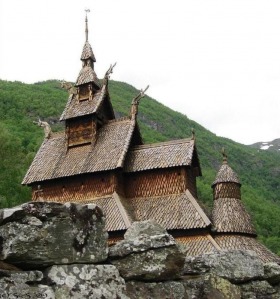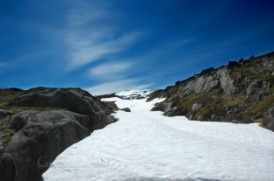A Brief History of the 1952 Oslo Winter Olympics
"With the awarding of the sixth Winter Olympics to Oslo, the Games were held for the first time in a Scandinavian country. Some questioned the country’s ability to stage the competition, but the worries proved unfounded. New facilities were built and existing ones refurbished to meet the high Olympic standard. Oslo saw the Winter Games debut of the Olympic torch, a tradition started in the Summer Games" (Olympic Games, 2010).
The Olympic Winter Games held in Oslo in 1952 were nothing like the Olympic Games we have today. In the 2010 Vancouver Games over 80 countries participated and over 5,000 officials and athletes competed (New York Times Company, 2010). However, in 1952 there were only about thirty nations involved in the games (Petersen, 1952). Although the games have grown largely since then, the number of nations and athletes involved in a country’s Olympic Games should not be quite as important as the contributions that country makes to the games as a tradition. For example, it is important to note that the 1952 Oslo Winter Olympics were held for the first time in a Scandinavian country and were only the sixth Winter Olympics in the history of the new games (Petersen, 1952).
The Summer Olympic Games were revived by Pierre de Coubertin in 1896, and, thirteen Summer Olympic Games later in 1924, the first Winter Olympic Games were held in Chamonix, France (Petersen, 1952). Summer Olympic Games were traditional to the Ancient Greeks, by whom the original Olympics were created, thus is the reason for the late creation of Winter Olympics. Though the winter games are fairly new, the processes and management of the games caught up rather quickly. In fact, in the years before they won the 1952 bid to host the winter games, Norway built four of its most important infrastructures, enduring pieces of architecture that are still in existence and still in use. They are the Holmenkollen ski jump, Bislett Stadium, Frognerseteren Bobsled Course, and Lilestrom Stadium, discussed more in the section Infrastructure.
Although the winter games may be a relatively young idea, winter sports have been around for much longer. On an island in the northern section of Norway, engravings of skiers have been found and dated as over 4,000 years old (Petersen, 1952). Skating is also quite old. In old Nordic mythologies tales of ice skating are not uncommon (Petersen, 1952).
Our hope for the 2022 Winter Olympic Games is to bring the world back to one of the earliest birth-places of the Winter Games and of winter sports. As one of the first countries to host the Winter Olympic Games, we are now more equipped and more prepared to host another Olympic Games even than we were back in 1952. As a country that has won more Winter Olympic medals than all other countries (303 total, to be exact) we believe the Olympics should return again so the world can see first hand what we have to offer (NBC, 2010).


